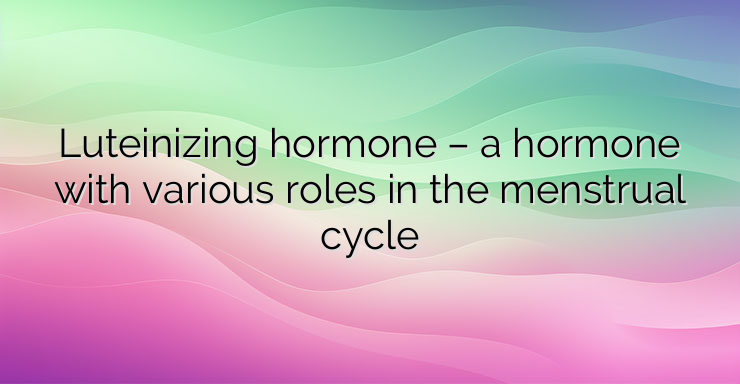Luteinizing hormone is produced by the pituitary gland and is one of the main hormones that control the reproductive system. Luteinizing hormone, like follicle-stimulating hormone, is a gonadotropic hormone produced and released by cells in the anterior lobe of the pituitary gland. It is crucial for regulating the function of the testicles in men and the ovaries in women. In women, luteinizing hormone fulfills different roles in the two halves of the menstrual cycle. In weeks one to two of the cycle, luteinizing hormone is needed to stimulate the ovarian follicles in the ovary to produce the female sex hormone estradiol. Around day 14 of the cycle, a surge in luteinizing hormone levels causes the ovarian follicle to rupture and release a mature oocyte (egg) from the ovary, a process called ovulation. During the rest of the cycle (third to fourth week), the remnants of the ovarian follicle form a corpus luteum. Luteinizing hormone stimulates the corpus luteum to produce progesterone, which is needed to maintain the early stages of pregnancy if fertilization occurs. Fine-tuning the release of luteinizing hormone is vital for maintaining fertility. Therefore, compounds designed to mimic the actions of gonadotropin-releasing hormone, luteinizing hormone, and follicle-stimulating hormone are used to stimulate gonadal function in in vitro fertilization techniques. Measuring urinary luteinizing hormone levels can be used to predict the time of a woman’s luteinizing hormone peak and hence ovulation. This is one of the methods used in ovulation prediction kits used by couples who wish to conceive. High levels of luteinizing hormone can be an indication of infertility. Because luteinizing hormone secretion is tightly controlled by the hypothalamic-pituitary-gonadal axis, high levels of luteinizing hormone in the bloodstream may indicate reduced sex steroid production by the testes or ovaries (eg, as in premature ovarian failure). Polycystic ovary syndrome is a common condition in women associated with high levels of luteinizing hormone and reduced fertility. In this condition, an imbalance between luteinizing hormone and follicle-stimulating hormone can stimulate inappropriate testosterone production. Genetic disorders, such as Klinefelter syndrome and Turner syndrome, can also result in high levels of luteinizing hormone. As a result, the testicles are small and do not secrete adequate levels of testosterone to support sperm production. Turner syndrome is a female-only disorder caused by partial or complete deletion of the X chromosome. In affected patients, ovarian function is impaired and therefore the production of luteinizing hormone increases,to try to stimulate ovarian function. Low levels of luteinizing hormone can also lead to infertility in both men and women, as a critical level of luteinizing hormone is needed to maintain testicular or ovarian function. In men, an example of a condition in which low levels of luteinizing hormone are found is Kallmann syndrome, which is associated with a deficiency in secretion of gonadotropin-releasing hormone from the hypothalamus. In women, the lack of luteinizing hormone means that ovulation does not occur and the menstrual cycle may not occur regularly. An example of a condition that can be caused by too little luteinizing hormone is hypothalamic amenorrhea. References: 1.Barbieri RL. The endocrinology of the menstrual cycle. Methods Mol Biol. 2014; 2.Gaskins AJ, Mumford SL, Wactawski-Wende J, Schisterman EF. Effect of daily fiber intake on luteinizing hormone levels in reproductive-aged women. Eur J Nutr. 2012; 3.Kumar P, Sait SF. Luteinizing hormone and its dilemma in ovulation induction. J Hum Reprod Sci. 2011 Jan;


Leave a Reply